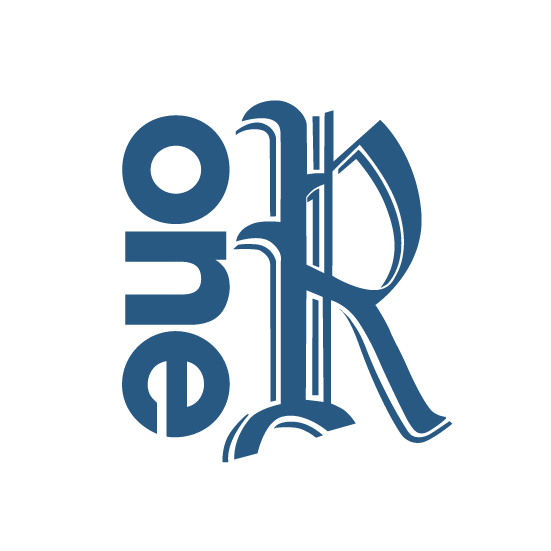Information
-
FPA - Job description
-
Client / Site
-
Conducted on
-
Prepared by
-
Location
-
Personnel
FPA Questions
Take 5
-
Pre-start S.A.F.E. - TAKE 5 Scan Asses Fix Execute
A - CONTROL OF HAZOURDOUS ENERGY (Electrical / Mechanical) Prior to performing work on machines or equipment, employees shall identify all hazardous energy forms, bring them to a Zero Energy State* and secure them. This shall include but is not limited to mandatory use of lockout / tag out procedures when working on any electrical, mechanical, hydraulic, pneumatic, compressed gas, chemical or thermal processes. *Zero Energy State is defined as the elimination and/or control of hazardous energy such that it no longer represents a hazard to employees.
-
A1-Employee (s) identify all equipment that may contain Hazardous Energy (potential, kinetic, thermal, hydraulic, electrical etc)
-
A2-Employee (s) identify if more than one energy source exists and can isolate by LOTO all energy sources
-
A3-Employee(s) can demonstrate how to bring mechanical energy to ZES. Eg use line breaking to blank or blind, or double block & bleed, drain or isolate piping
-
A4-Employee (s) have the required LOTO devices - personal padlock with single key, danger tags, multi clasp, portable lock out devices.
-
A5-Employee (s) aware of approved alternative methods to use when there is no LOTO capability for the equipment.
-
A6-Employee(s) can demonstrate/explain LOTO of equipment including multiple LOTO (2 or more people). Demonstrate/explain ZES - verify voltage tester/multimeter before & after ZES.
-
A7-Employee (s) aware of requirements/precautions/controls if working on or near exposed electrical components at or above 50 volts. Fatality Prevention Standard work - Electrical safety
-
A8-Only competent employee (s), trained to work on energized electrical circuits, are permitted to work on or be near energized circuits.
-
A9-Electrical equipment / tools checked by competent person with current test & tag. Electrical hand tools are insulated for greater than 110v and without damage. 10 mA RCD available/used with portable tools/equipment. RCD located close to point of connection and <= 30m from tool it is protecting.
-
A10-Jewellery, other metallic objects not worn near live equipment. Fibro glass ladders used for work on or near electrical source / equipment.
-
A11-Other - eg voltalert
B - WORKING @ HEIGHTS - FALL PROTECTION Employees shall use fall protection when exposed to a fall hazard (working at an elevated level of 2 meters or more)
-
B1-Full body harness or guard rail (handrail 900-1200, mid rail, kick board) used when: i) exposed to a fall hazard > 2m, or ii) floor / wall openings > 30 cm in its least direction & there is a drop >2 m, or iii) working on roof at height > 2 m and within 3 m from an unprotected edge, or iv) working on ladder at > 6m.
-
B2-Full body harness & lanyard equipment IS inspected in good condition & within 10 years of DOM. Equipment subjected to impact loadings immediately removed /destroyed
-
B3-Shock-absorbing/retractable lanyard used with a full body harness. Length of lanyard when fully extended plus employee's height is less than distance between anchor point & ground.
-
B4-Employee demonstrates correct inspection & wearing of harness, sequence of connecting & disconnecting lanyard from anchor point i.e. employee tie off before exposed to fall hazard
-
B5-Capacity of anchor point for lanyard or lifeline is adequate for fall arrest system. Rescue plan is developed and employee (s) are aware of the process
-
B6-other
C - WORKING @ HEIGHTS - LADDERS
-
C1-Employee (s) demonstrate / explain they conduct work without stretching centre of the body beyond ladder rail. Top 2 rungs are not used and ladder is not straddled.
-
C2-Employee (s) demonstrate / explain tool belt used & or three-point contact e.g. two feet-one hand are maintained when climbing ladder & when ladder is used as a work surface.
-
C3--Employee (s) demonstrate / explain Ladder secured or footed by second person to prevent movement. Extension ladder placed at 1 to 4 ratio & extend >= 1 m above work surface.
-
C4-Surrounding area below ladder is barricaded to prevent others from entering or working below
-
C5-Ladders are inspected before use, in good working condition & without damage, have ladder tag with annual inspection & labelled with load capacity.
-
C6-Other.
D - WORKING @ HEIGHTS - EWP - Elevated Work Platform
-
D1-Operator qualified to use EWP, demonstrates/explains pre-start inspection - operation of EWP, emergency stop, emergency lowering, rescue procedure.
-
D2-operator demonstrates/explains they stand at front of the EWP when driving forward, do not sit or climb edge of basket or use planks, ladders, or other such devices.
-
D3-EWP maintained in good working condition with current certification issued by supplier available with the equipment.
-
D4-Area EWP will travel and the work area EWP is operated in has adequate lighting or EWP is fitted with task lighting & lighting is operational.
-
D5-EWP used on level ground, work areas free of obstructions, No covered / open penetration within work area. No overhead obstructions eg live power.
-
D6-Housekeeping - material on EWP secured from falling, platform free of trip hazards. Area below barricaded or spotter used to prevent others entering or working below.
-
D7-Fall protection equipment is worn at all times when working in Boom lift.
-
D8-Other.
E - WORKING @ HEIGHTS - Attics / False Ceilings Always ensure there is sufficient lighting & use weight bearing surfaces when working in attics & false ceilings.
-
E1-Mandatory PPE - hard hat/bump cap, head lamp, safety glasses/goggles, gloves, P2 dust mask/respirator, long sleeve drill shirt, pants/overalls, steel cap boots, hearing protection.
-
E2- employee demonstrates/explain access/egress into ceiling is secured eg ladder tied off/footed by 2nd person. Area below barricaded to prevent others entering/working belo
-
E3-Sufficient lighting in ceiling space. Work area is free from electrical & trip hazards. Volt Alert used to check for live 240v.
-
E4-Ceiling structure inspected before entry, is weight bearing. planks used as walking platform and secured 120kg weight capacity. Fall protection, suitable anchor point if fall hazard >2 m.
-
E5-Electrical services isolated and LOTO if metal roof &/or insulation foil is installed in ceiling space
-
E6-Planned breaks dependent on weather conditions (break every hour in hot conditions) and maintain hydration to prevent fatigue.
-
E7-Rescue plan is developed and employee (s) are aware of the process.
-
E8-Other.
F - WORKING @ HEIGHTS - Scaffolding
-
F1-Scaffold assembled & certified safe to use by a competent person, certificates available onsite or on scaffold eg Scaff tag
-
F2-Scaffold is on solid ground, braced, platform secured, guardrail (handrail 900-1200, mid rail, kick board), access ladder fixed to scaffold.
-
F3-Housekeeping - platform free of tripping hazards, no items/tool can be dislodged, area below is barricaded to prevent others entering/working below. Overhead protection provided.
-
F4-Other
G - SUSPENDED LOADS (Hoisting & rigging) No employee may work or pass under a suspended load. Suspended load hazard area is area directly under / around the load that could pose a hazard if load was to fall to the ground.
-
G1-Lifting equipment (chain blocks, slings, etc) must be regularly serviced, inspected and tested. Load must never exceed Safe Working Load (SWL) of the lifting device
-
G2-Slings are protected against sharp edges, not bent at too sharp an angle, Damaged slings removed from service. Hands must not be placed on parts of the load where a loss of control could result in a striking or pinching injury.
-
G3-No walking or Working under any part of the suspended load, Employees must be clear of the suspended load hazard area at all times and maintain line of sight with each other & load, use agreed form of communication
-
G4-other
H - MOTOR VEHICLE SAFETY
-
H1-Interior & storage compartment clean & tidy, no loose items on passenger seats/floor, cargo barrier fitted, Tools & equipment stored securely to prevent movement while driving
-
H2-First Aid Kit available & supplies current. Fire Extinguisher secure & in service (6months). Mobile phone can be used hand free
-
H3-Seat belt, lights, brake lights working. no chips/cracks on windscreen, Tyres have Min 1.5mm tread. Spare Tyre, Tools & Jack in good condition & operational.
-
H4-Pressurised / flammable Gas cylinders secured, vehicle is ventilated. Chemicals stored in secondary container & secured. MSDS available within 5 years
-
H5-PPE in good condition. Hardhat <= 3 years. Fall Arrest equipment <= 10 years.
-
H6-Roof Rack secured & Ladder restraint system is in good condition.
-
H7-Ladders tied down, secure, in good condition, no bent rungs, treads not worn, fibreglass not splintered. Extension ladder pulleys & rope guides not rusted or seized.
-
H8-other
I - MACHINE GUARDING - Employees shall not tamper with or disable machine / equipment guarding while operating under normal conditions.
-
I1-Machines/equipment have safeguards to prevent exposure to moving parts/points of operation, prevent operator accessing pinch points. Safeguards secured & not easily removed.
-
I2-Controls that start machine are protected against unintended or accidental operation. Eg hand and foot operated controls, dual start point on drop saw.
-
I3-PPE for machine/task used - eye protection (safety glasses/goggles), hearing protection (ear plugs/ear muffs). No loose clothing and No Gloves used on or near rotating components.
-
I4-other
J-CONFINED SPACES - confined spaces shall be identified and written procedures established and followed for entry
-
J1-Employee can demonstrate / explain Confined Space characteristics: 1) limited access and egress; 2) not designed for continuous occupancy (EG: storage tanks, process vessel, bin, boiler, ventilation/ exhaust ducts, vault, pipeline, spaces with an open top more than four 1.2m deep (pit, tub) 3) Is or is likely to have atmosphere that does not have a safe oxygen level, or contaminants, including airborne gases, vapours and dusts, that may cause injury from fire or explosion, or harmful concentrations of any airborne contaminants, or engulfment.
-
J2-Employee (s) entering confined spaces must be trained in confined space entry and hold certificate. Confined space entry permits must be completed and authorised prior to entry
-
J3-other
"K - COMPRESSED GAS STANDARDS - Standard applies to all UTC CCS manufacturing, construction, installation, modernization and service sites. Consult CGS criteria-guidance, risk assessment and operating worksheets when answering questions below."
-
K1-Cylinder valve protected/guarded, or valve protection caps installed at all times. Cylinders are clearly labelled to show contents
-
K2-Cylinders firmly secured. CYLINDERS MUST REMAIN SECURE. Cylinder valves are closed on any cylinders not in use
-
K3-Oxygen and acetylene cylinders stored at least 6m apart, or in separate rooms or there is a fire separation between oxygen/acetylene cylinders.
-
K4-Oxy-acetylene set secured on trolley by chain, flashback arrestor fitted to regulator & torch ends, hose & regulator without damage, fire extinguisher available, hot work permit completed prior to any hot work. Regulators & hose removed from oxy/acetylene if stored for > 24 hours.
-
K5-Gaseous suppression cylinders installed to UTC CCS approved installation methods
-
K6-Gas supply lines and hoses labelled identifying the gas product.
-
K7-Required PPE for specific tasks involving compressed gases , gas suppression and or cryogenic liquids is posted and immediately available.
-
K8-Cylinders stored at least 6m from combustible materials & chemicals such as oil, or in a room separating gases from combustibles. Cylinders not directly exposed to hot permit activities
-
K9-Transportation and manual handling of Cylinders and Handheld Portable Fire Extinguishers are done in accordance with UTC CCS and local requirements
-
K10-Other
L - Management System Observations - Training, Rules and Procedures, Inspections and Audits etc.
-
Observations?
-
Auditor Signature
-
Technician Signature












